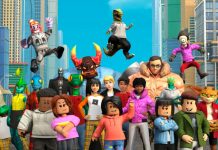A simple fact of life: kids love games.
Video games have been a long time obsession for kids of all ages and the entry of PC and mobile games in the last decade has allowed more kids to connect and play together than ever before. MMOGs (Massively Multiplayer Online Games) like Roblox, Minecraft, and Fortnite have millions of players logging on every year. Many of the players are kids as it’s reported that 1 in 5 gamers is under 18 years old.
Games make up a lot of our kids’ free time. Online games are a source of entertainment and community and some parents and kids even bond over playing games together creating a booming industry that is only getting bigger.
According to Statista, in 2020 the revenue from the worldwide PC gaming market was estimated at almost 37 billion U.S. dollars, while the mobile gaming market generated an estimated income of over 77 billion U.S. dollars.
For kids and teens, it’s a good time to start learning the skills to join this growing industry.
One obvious way to be a part of the gaming industry is by playing games. E-sports, competitive and organized video game play, has created a profession out of playing games, earning top players over $120 Million in 2019.
But, playing games is just one side of gaming. There’s also the game creation. There are many aspects of video and mobile game creation including the visual design, storyline, hardware production, and, of course, the code.
Kids who have their own creative ideas may be inspired to go beyond just playing and to building their own games.
A game programmer writes the code that runs the game. Every action or graphic you see in a game, like a player running or collecting items, an object moving right or left, or a simple button click, is a result of code running in the background. To produce a single online game it can take hundreds of developers.
How can your child go from playing games to developing games? As a parent, this might be new territory if you’re not as interested in games and technology and your child. Here are a few tips to get started:
- Learn a Coding Language
C++, Java, and Python are popular coding languages for video games, with games like Minecraft and Roblox using a combination of these and other languages. But even kids who can’t type yet can start learning programming concepts. Coding can start as early as elementary school with drag and drop programming in Scratch. Having a solid foundation of computer programming knowledge is crucial for any game developer. Luckily there are plenty of options to learn coding such as coding websites, online coding classes, or at school if it’s offered. Free coding for kids resources are a good way to gauge your child’s interest.
Popular game coding languages include C#, C++, Java, Python, and JavaScript.
- Change Code on Games They Already Play
For the games your kids are already obsessed with, they can study the code behind it. Today, games can be highly personalized and several kids’ games allow them to build and create with code to enhance the current game. In Minecraft Education Edition, kids can use drag and drop block coding in the Code Builder. For more advanced students, Minecraft modding in Java allows them to customize and build features, like a building or sword. In Roblox, kids can use code to customize characters and even build complete games. Studying the code behind their favorite games can be an excellent tool for practicing their game development skills.
Popular kids games with code mods include Minecraft, Roblox, Codea, and CodeCombat.
- Develop A Simple Game
Sometimes the best way to get started is just to dive in. Kids should try to build a simple game with minimal features to start. This allows them to go through the process of planning, coding, and testing a game themselves. It also allows them more freedom with their own ideas and interests. Building a simple game will strengthen more than just their coding skills, it also bolsters the critical thinking, problem solving, and analytical skills that are required to succeed as a game developer. Set a goal, like coding a Scratch game or Python game as the first project.
- Learn About Game Engines
Many games run on game engines that provide the tools and framework for game development. These programs can help developers render 2D and 3D graphics, animations, sounds, and much more. Game engines also allow developers to build games quickly across multiple platforms. There are even game engines that use drag and drop, so no real coding is required. Kids can get familiar with game engines to understand the different parts of a game and how they work together.
Popular game engines include Unreal Engine, Unity, Amazon Lumberyard, and GameMaker: Studio.
For kids who already love to game, encouraging them to learn more about this hobby and create their own games is a great way to help them learn skills that will benefit them now and in the future. When kids learn how to code to develop games, a whole world of other possibilities opens to them.
With so many resources available now to help kids learn how to code their own games, it’s easier than ever for kids to become game developers. With the gaming industry continuing to grow exponentially, these skills could also become a lucrative career!





















For absolute newbies learning to program games, I think simple games to create would be games like:
– Guess a number between 1-100
– Rock Paper Scissors
– Blackjack
– Hangman
I think those examples are typical games you’d seen in any intro to programming.